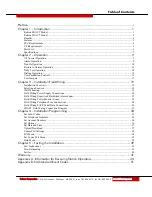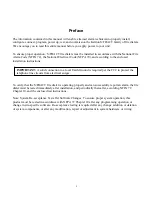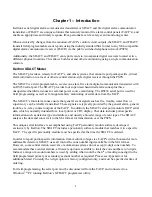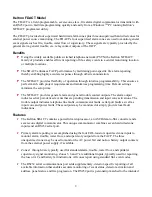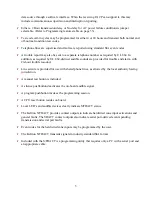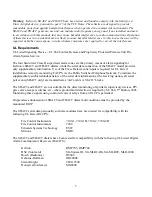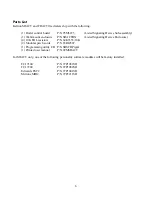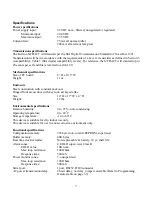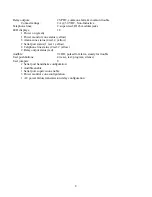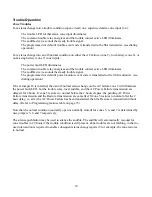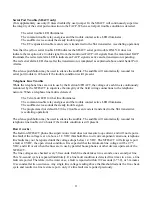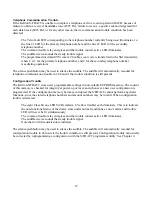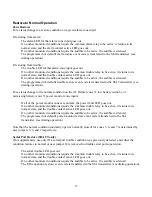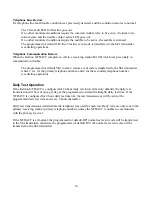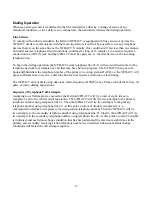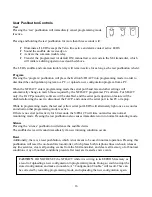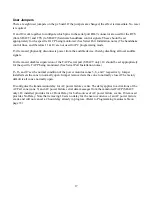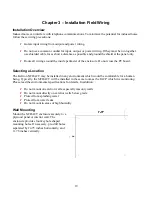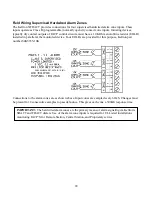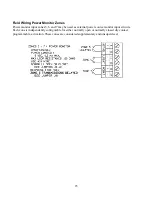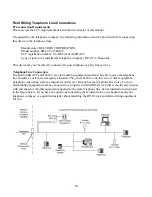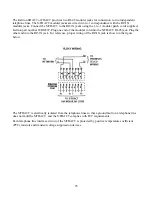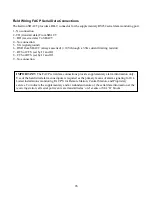
11
Serial Port Trouble (SDACT only)
(For supplementary use only) Unless disabled by user jumper J4, the SDACT will continuously supervise
the integrity of the serial port connection to the FACP. When a serial port trouble condition is detected:
The serial trouble LED illuminates.
The common trouble relay energizes and the trouble contact active LED illuminates.
The audible device sounds the steady trouble signal.
The ET (expansion trouble) event code is transferred to the SIA transmitter. (see dialing operation)
Note that the yellow serial trouble LED indicates the SDACT serial port trouble ONLY. It does not
indicate the reception of a trouble signal from the monitored FACP. All signals from the monitored FACP
illuminate the red serial alarm LED to indicate an FACP signal is active and a transmission is pending.
The red serial alarm LED clears after the transmission is completed as explained above under Serial Port
Alarms.
The silence pushbutton may be used to silence the audible. The audible will automatically resound for
serial port trouble in 24 hours if the trouble condition is still present.
Telephone Line Trouble
While the telephone lines are not in use by the Keltron S/FDACT, the voltage of each line is continuously
monitored by the S/FDACT to supervise the integrity of the field wiring connections to the telephone
network. When a telephone line fault is detected:
The Telco fault LED for that line illuminates.
The common trouble relay energizes and the trouble contact active LED illuminates.
The audible device sounds the steady trouble signal.
The programmed (or default LT) line # trouble event code is transferred to the SIA transmitter.
(see dialing operation)
The silence pushbutton may be used to silence the audible. The audible will automatically resound for
telephone line trouble in 24 hours if the trouble condition is still present.
How it works:
The Keltron S/FDACT phone line supervision circuit does not measure loop current, and will not report a
line fault if the voltage is at or above a 1.8 VDC threshold. Due to circuit component variations, telephone
line faults may not be reported until the voltage drops below 1.4 VDC. The S/FDACT will always report
a fault at 0 VDC, the open circuit condition. It is expected that the minimum line voltage will be 2.75
VDC, and will occur when the lines are in use by parallel house phones or other devices upstream of the
S/FDACT.
The line voltages are checked every 30 seconds. Each line check takes two seconds, one second per line.
This 32-second cycle is repeated indefinitely. If a line fault condition is detected five times in a row, a line
fault is reported. Therefore, in the worst case
,
a fault
is reported
within
192 seconds
(6 * 32), or 3 minutes
12 seconds after its occurrence
.
Any single line voltage reading above the threshold restarts the five-check
cycle and results in a line restore report - only if a line fault was reported previously.

